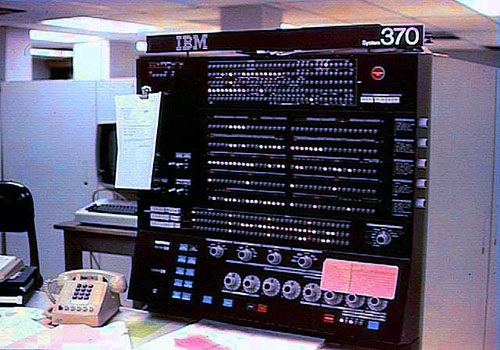Preamble
The Australian Computer Society (ACS) was formed 50 years ago, when the various state computer societies joined forces.
To mark the occasion, the ACS has initiated a heritage project to honour the many individuals who have contributed to the growth of the ICT profession in Australia.
At the heart of the project is a history of computing in Australia. It is not just a history of the ACS, but the history of a profession.
Australia has the longest computing history of any country, excepting the US and the UK, and CSIRAC in the Museum of Victoria is the oldest computer still in existence.
Chapter 33: Australia’s software entrepreneurs
Australia spawned a number of software entrepreneurs in the 1970s, many of whom were very successful internationally.
In the early use of computers, there was very little software and users had to write their own, even at the system software level. Australia’s relative isolation meant that local organisations were even more reliant on their own resources than those in the USA or the United Kingdom, where virtually all our computers came from.
There were early examples, such as the development of ICL’s George operating system at the University of NSW (see Chapter 6). With the widespread use of commercial computing after the release of IBM’s System/360 in 1964, many local software developers started writing software for resale rather than only for their own use. These Australian innovations were amongst the most successful of the early software vendors who provided added functionality to IBM mainframes.
Three outstanding examples were Boyd Munro, John Robinson and Ian Cairns.
Boyd Munro and GRASP
Boyd Munro was Australia’s first successful software entrepreneur. In the late 1960s, after studying mathematics at the University of Melbourne, he was working for IBM Australia. He believed that the IBM System/360 operating system (initially called DOS 360) could be greatly improved by the addition of spooling – the ability to queue input and output so that the computer was not dependent upon the speed of its peripherals.
He wrote the software in his own time and offered it to IBM which turned it down. Convinced he was onto something, in 1969 he went to London where some friends at aircraft company Hawker Siddley gave him time on their IBM mainframe to improve the software enough to make it a saleable product. The only condition was that Hawker Siddley was subsequently able to use the program for free.
The software, which he called GRASP, became the most successful independent IBM systems software product of its era. Within five years, more than 1000 copies had been sold worldwide. Munro created a company called Software Design, Inc. (SDI), incorporated in the USA, to market it. In Australia, it was marketed by Adaps (see Chapter 31). The software was rented rather than sold, as most of IBM’s products were at that time, ensuring a steady revenue stream.
GRASP was updated as new versions of the operating system were released – DOS/VS and DOS/VSE. With the System/360’s great success and the release of the System/370 in 1970, SDI became the first significant independent system software company. It diversified into other systems software tools, notably EPAT for tape management and FMAINT for library management
Munro was a colourful figure. He set up SDI’s R&D centre in Bermuda, from where it was easy to service both the US and European customers. It was also, conveniently, a tax haven. He installed that island’s first IBM mainframe in his development centre (each copy of GRASP had to be tailored for the individual installation).
The use of GRASP and other SDI products gradually declined in the 1980s as IBM’s operating systems achieved more functionality -- a common fate of this type of software.
Munro’s great passion was, and is, for flying. He subsequently became active in the promotion of Australian aviation and aviators, setting up Air Safety Australia in 2000 to lobby against what he believed to be inadequacies in the government’s aviation policy.
John Robinson and Net/Master
In the late 1970s, John Robinson was a systems programmer working at the Bank of NSW (now Westpac), where he developed some software to improve the management of the bank’s IBM Systems Network Architecture (SNA) network. IBM had developed SNA in 1974 as a way of connecting mainframes, terminals and remote devices.
Robinson saw the potential of the software he had built and left the bank to develop it into a product, which he named Net/Master. He and two associates, Steve Dawson and Michael Gill, formed Software Developments International (SDI) to develop and market the product, which competed against IBM’s own NetView.
Robinson was managing director and handled sales and business development. Dawson, who had previously worked at the bank with Robinson then moved to Alcoa, was technical director and also did much of the selling, and Gill managed the architecture and technical development.
Much of the development of Net/Master was done on Qantas’s mainframes in the airline’s Sydney data centre. In an arrangement not unusual in the software industry, Qantas always had use of the software at a substantial discount.
Net/Master was extremely successful in Australia, and was eventually in use at over three quarters of all of Australia’s large IBM mainframe sites. Some sales were made when senior systems programmers move from one company to another, and demanded that Net/Master be installed on the condition of employment.
Net/Master was also quite successful internationally. In 1984, SDI licensed the international marketing rights to Cincom, which then distributed Net/Master globally outside of Australia. In 1988, that agreement and in a lawsuit over different interpretations of the terms of Cincom’s distributorship.
Those problems were solved when SDI sold Net/Master to US software company Systems Center in 1990, at a time when the IBM system software market was consolidating. As part of the deal Systems Center also acquired the global marketing rights off Cincom. Robinson, Dawson and Gill continued to work with Systems Centre on product development for the next few years.
Net/Master was never as successful globally as it was in Australia, though in some markets such as the United Kingdom, Germany and Japan, it outsold IBM’s NetView. Systems Center continued to develop the product but, in a familiar tale, that company was acquired by Sterling Software in 1993. Sterling Software was in turn acquired by Computer Associates in 2000. The software, much altered with time, is now called CA NetMaster.
SDI had another product called IMS/Access to improve the management of IBM’s IMS database (see Chapter 32). That was not part of the systems Centre deal, so Robinson subsequently started another company. Locksley Software, to sell and support it. The company and the product are still in existence.
Ian Cairns and PDSMAN
In the early 1970s Ian Cairns was a systems programmer working for Qantas. In 1976 he developed software on Qantas’s IBM mainframe to simplify the management of partitioned datasets under IBM’s MVS operating system. He called the software, prosaically, PDSMAN (Partitioned Dataset Management System).
He built the software into a product in his spare time and sold it to finance company AGC and the Bank of New South Wales (later to be called Westpac). In 1981, he arranged for US software vendor Goal Systems, which had just set up in Australia (see Chapter 32), to sell the software globally, and he left Qantas to join the Australian operation, where he continued to develop the software.
PDSMAN became very successful internationally, in use at hundreds of IBM MVS sites worldwide. After Goal Systems took direct control of the Australian operation in 1987, Cairns left and formed a new company called Software Design Associates (SDA) to continue the development of the software, with some of the development taking place at Goal Systems’ head office in Columbus, Ohio.
Goal Systems was subsequently sold to Legent, and then Legent to Computer Associates, where the software still exists today as CA PDSMAN. SDA still distributes the product in Australia and New Zealand, but all development now takes place in the USA.
Veteran ICT journalist Graeme Philipson is researching and writing the Heritage Project book, which is due for release on the 50th anniversary of the formal incorporation of the ACS, on 3 October 2017.
The project also involves the creation of a ‘virtual museum’, cataloguing hardware and other artefacts, and collecting and curating documents on the history of the industry, including oral histories of as many people as possible.
Please get in touch with Graeme if you would like to contribute, at [email protected]
Do you have early memories of the ICT industry in Australia? Help us make history by sending us your story! Record or write your memories to be included in our historic ACS Heritage Project. Details here.
Previously published:
Chapter 32: Multinational software companies move in
Chapter 31: Birth of Australian software and services industry
Chapter 30: The rise and decline of the PCMs
Chapter 29: ‘Plug compatible manufacturers’ take on IBM
Chapter 28: The rise of Fujitsu
Chapter 26: The rest of the BUNCH
Chapter 25: Honeywell in Australia
Chapter 23: ACS at home and abroad
Chapter 22: The early years of the Australian Computer Society
Chapter 21: Other Australian universities
Chapter 20: University of Melbourne and Monash
Chapter 19: Sydney University and UNSW lead the way
Chapter 18: Computing in the Australian Government
Chapter 17: Trevor Pearcey and the birth of CSIRONET
Chapter 16: Enter the minicomputer – DEC comes to Australia
Chapter 15: The IBM S/360 in Australia
Chapter 14: IBM redefines the computer industry
Chapter 13: Control Data Australia (part II)
Chapter 12: Control Data Australia (part I)
Chapter 11: The Australian Computer Society
Chapter 10: Five Computer Societies
Chapter 9: Australian made, Australian designed
Chapter 8: Australia's Computer Industry in 1962
Chapter 5: SILLIAC and the Snowy Mountains Scheme
Chapter 3: Harry Messel and the birth of SILLIAC










